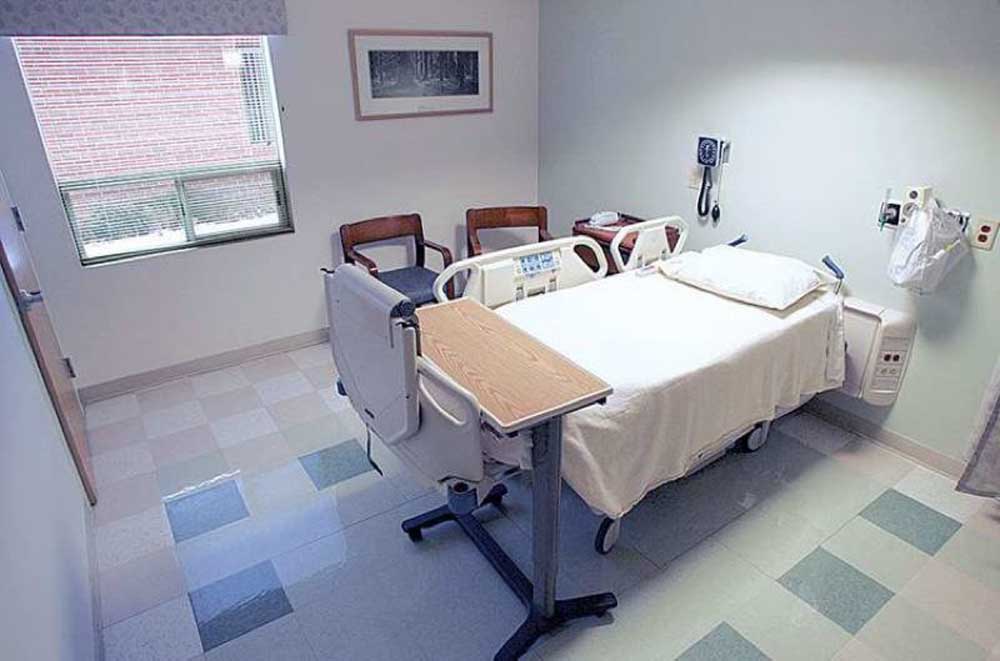Oregon at ‘tipping point’ as COVID-19 surge swamps hospitals
Published 10:00 am Monday, November 23, 2020

- Hospitals are at risk of being overwhelmed by COVID-19 in Oregon, according to state health officials.
Oregon’s hospitals are in imminent danger of being overwhelmed by a rapid rise in the number of COVID-19 cases, state health officials said Friday.
Oregon is at a “tipping point,” said Oregon Health Authority Director Patrick Allen at a Friday press briefing. The steep increase in infections is due primarily to community spread driven by informal get-togethers in private residences. Allen pleaded with Oregonians to follow mandates to wear masks, limit get-togethers to six people, wash their hands frequently and avoid travel during the upcoming holidays.
“We all want this pandemic to be over,” Allen said. “We all have the power to end this nightmare.”
Not following the guidelines will “feed the virus what it needs” to spread, escalating hospitalizations and deaths.
Statewide as of Friday, 412 people are hospitalized with COVID-19, a 142% increase since Nov. 1.
OHA reported 1,174 new COVID-19 cases and six deaths on Monday. The death toll was down from the record-breaking 20 reported Thursday.
Since the pandemic hit Oregon at the end of February, there have been 66,333 cased of COVID-19 and 826 deaths. Nationwide, there have been 12.5 million cases and 258,827 deaths.
At least two vaccines against COVID-19 are expected to start becoming available in very limited amounts around Jan. 1. But Allen said the timeline for when most Oregonians might get the vaccine is “completely unknown.”
Oregon has been under a COVID-19 “state of emergency” since March 8, allowing Gov. Kate Brown to issue executive orders with restrictions necessary to control the virus.
Brown implemented a two-week “freeze” that began Nov. 18, which caps private get-togethers to six people from no more than two households. Other restrictions include closing gyms and entertainment venues, and requiring restaurants to restrict sales to takeout only.
Allen said that opponents of the more stringent COVID-19 restrictions under the “freeze” have argued that Oregon’s relatively low total case numbers and deaths compared to other states should be evidence Brown should be opening up businesses and schools.
Republican lawmakers, a coalition of local officials and the association of the state’s restaurant owners have all written letters asking Brown to revoke some or all of the restrictions.
“I have heard frequently from those who have refused to believe this pandemic is serious if we aren’t seeing hospitalizations and deaths,” Allen said. “Those hospitalizations and deaths are here, and are only likely to go up.”
Among the critics on Friday was President Donald Trump.
At a Friday press briefing — the first since Oct. 1 — White House spokeswoman Kayleigh McEnany specifically singled out Oregon’s two-week “freeze” for criticism.
McEnany called the freeze and other restrictions around the country “Orwellian,” a reference to the book “1984” by George Orwell set in a society under strict state control.
Her comments came after the White House coronavirus task force, led by Vice President Mike Pence, said it supported state efforts to suppress infection rates.
The Oregon officials Friday defended the state’s testing for COVID-19.
“Oregon tests at a level that is comparable to most other states,” Allen said. “We’re right in line with other states per capita.”
Oregon is changing the way it reports test results, switching from people tested to number of tests. The new method is in line with how the Centers for Disease Control reports infection, as well as several other states.
The new formula drops Oregon’s 12.9% rate of positive tests to 6.7%
“Case counts have skyrocketed,” Allen said, but the current measuring system inflates the rate.
The new metric will include people who receive multiple tests, such as residents and staff at long-term care facilities.
Dr. Melissa Sutton, a senior advisor to OHA, said 966,000 Oregonians have been tested for COVID-19, or roughly 1-in-4 of the state’s estimated 4.2 million residents.
Because of the Thanksgiving holiday, OHA said there would be no press briefing this week. The next question-and-answer session with media will not be until Dec. 4.
Gov. Kate Brown ordered a two-week “freeze” on businesses and activities to try to cut the rapidly rising rate of COVID-19 infections.
The freeze, which runs from Nov. 18 to Dec. 2 in most of the state, includes:
• Limiting social get-togethers (indoors and outdoors) to no more than six people, total, from no more than two households.
• Limiting faith-based organizations to a maximum of 25 people indoors or 50 people outdoors.
• Limiting eating and drinking establishments to takeout and delivery only.
• Closing gyms and fitness organizations.
• Closing indoor recreational facilities, museums, indoor entertainment activities and indoor pools and sports courts.
• Closing zoos, gardens, aquariums, outdoor entertainment activities and outdoor pools.
• Limiting grocery stores and pharmacies to a maximum of 75% capacity and encouraging curbside pickup.
• Limiting retail stores and retail malls (indoor and outdoor) to a maximum of 75% capacity and encouraging curbside pickup.
• Closing venues (that host or facilitate indoor or outdoor events).
• Requiring all businesses to mandate work-from-home to the greatest extent possible and closing offices to the public.
• Prohibiting indoor visiting in long-term care facilities (outdoor visitation permitted for supporting quality of life).




